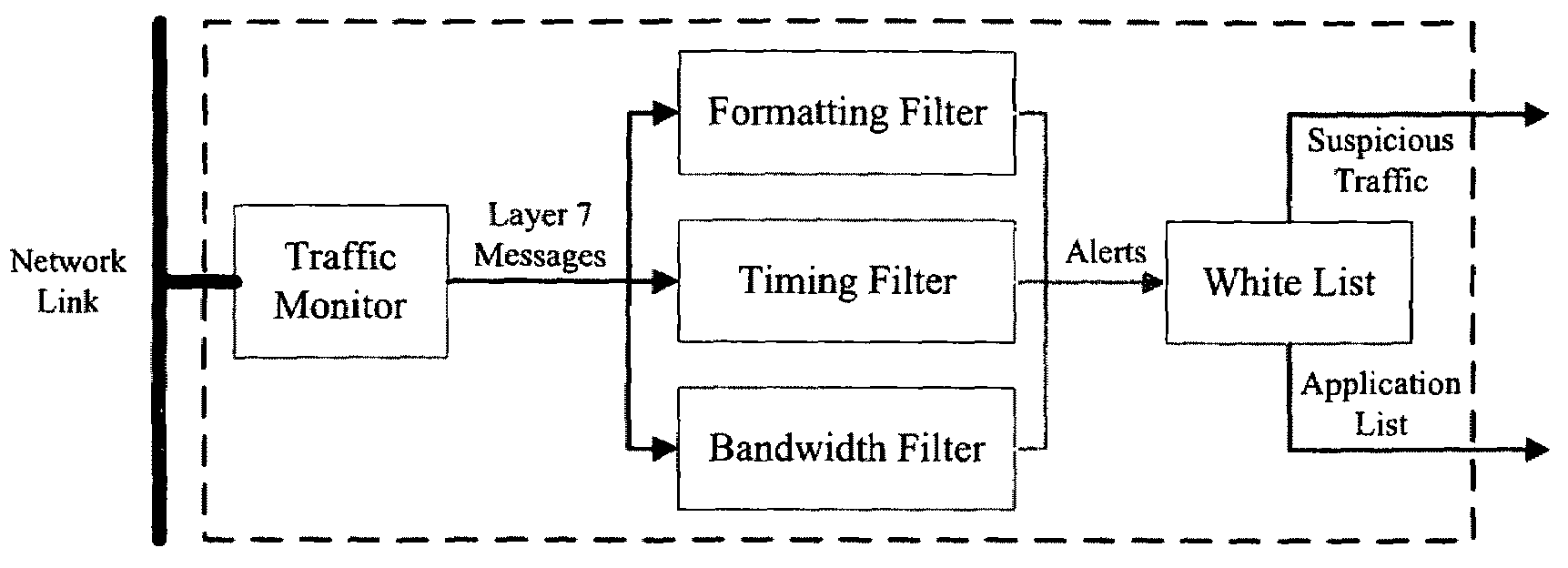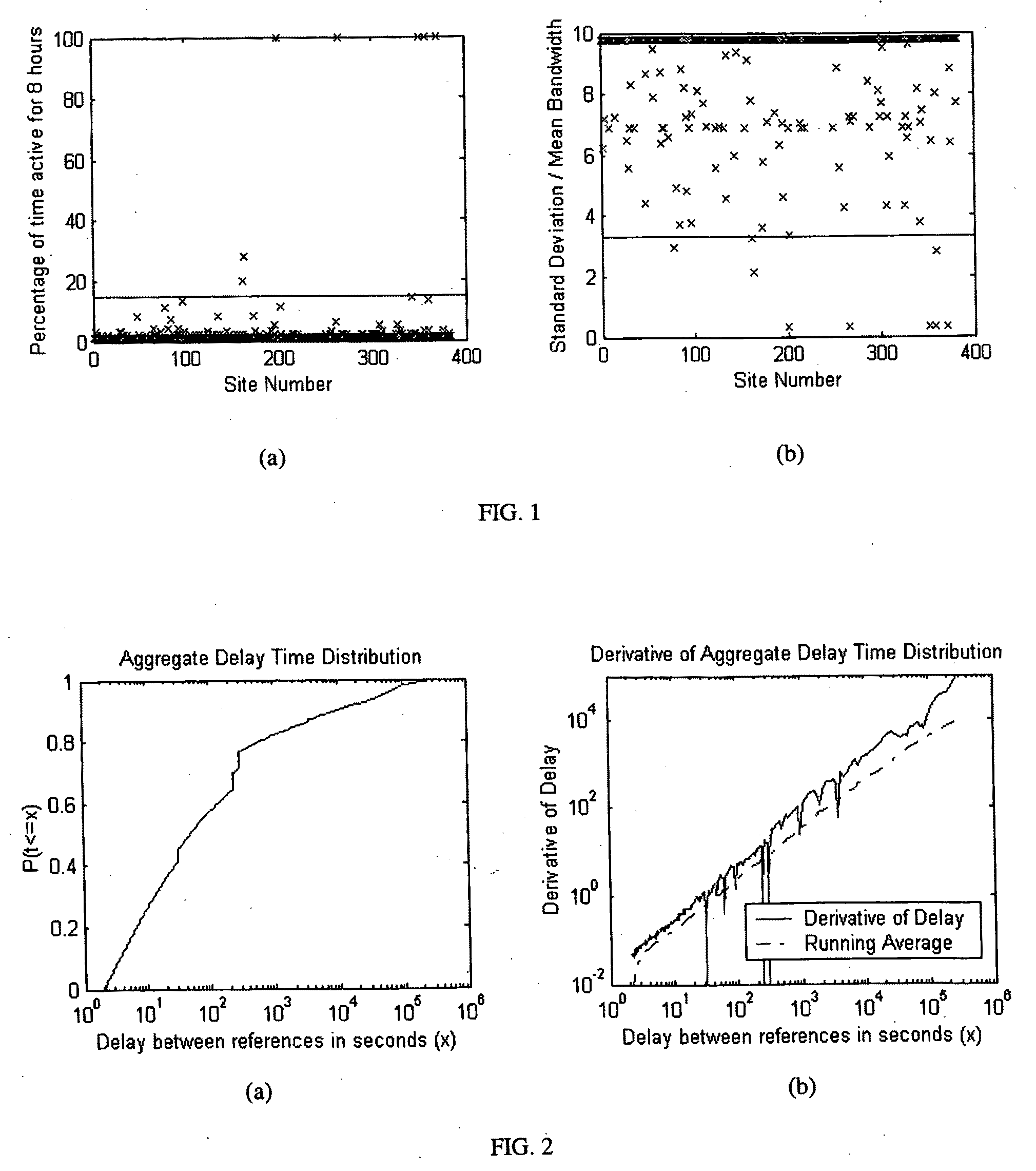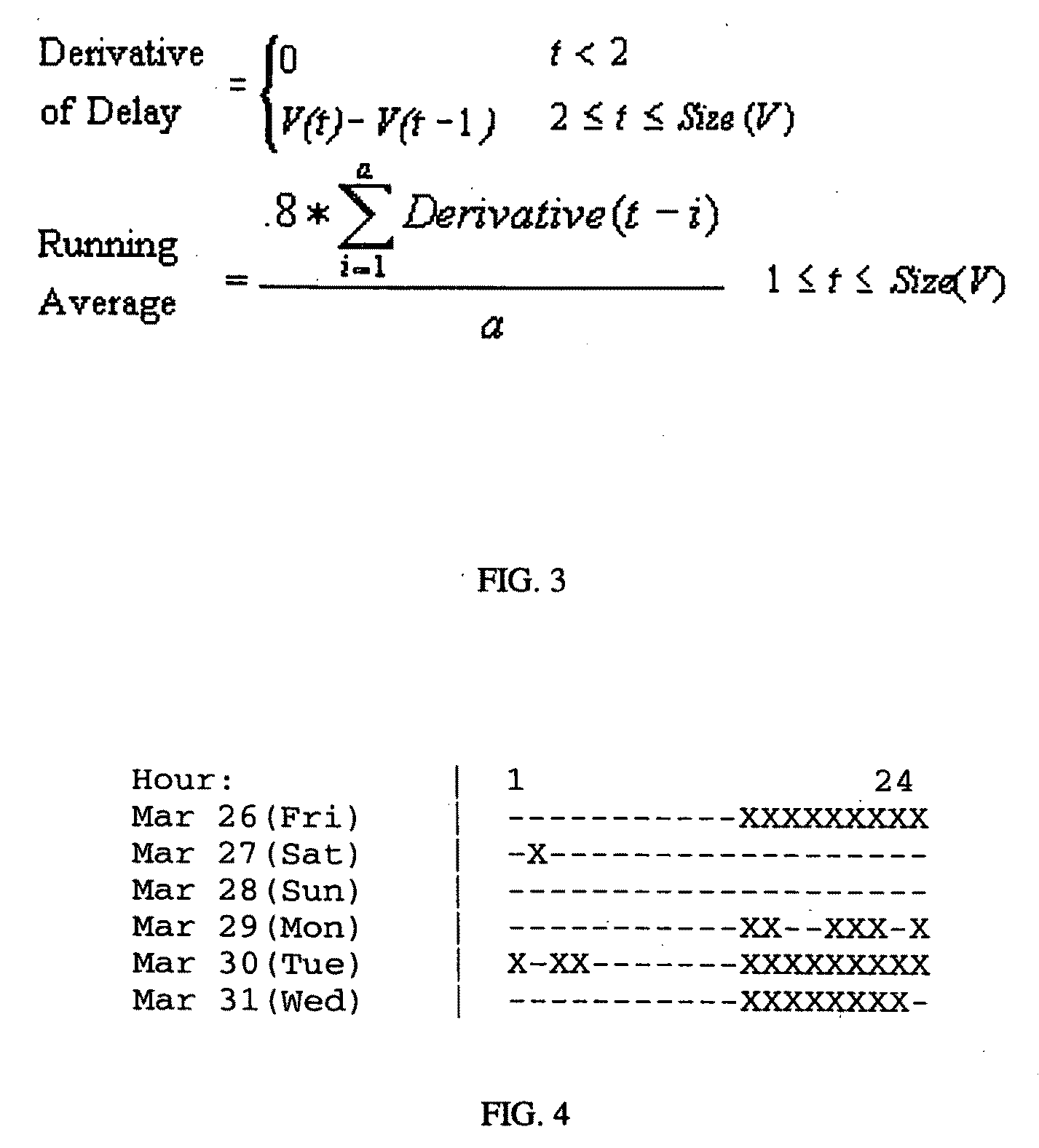Method, system and computer program product for detecting at least one of security threats and undesirable computer files
a technology of security threats and undesirable computer files, applied in error detection/correction, unauthorized memory use protection, instruments, etc., can solve problems such as security risks, peer-to-peer file sharing software presents a risk as well, and poses a serious threat to system security
- Summary
- Abstract
- Description
- Claims
- Application Information
AI Technical Summary
Benefits of technology
Problems solved by technology
Method used
Image
Examples
Embodiment Construction
)
[0131]Embodiments of a method, system and computer program product of the present invention detect web applications by only looking at their network traffic as described herein with reference to FIGS. 9 and 10. These methods differentiate programmatic web service access from human web browsing and expose information about active web applications. The methods focus on two key aspects of web traffic: timing and formatting. Human web requests occur in randomly interspersed bursts. Programmatic web requests, on the other hand, will often happen at regular fixed intervals. Humans also tend to browse the web at specific times according to a schedule, while programs may access the web at any hour of the day or night. We take advantage of this knowledge to discover web applications that call home on a regular basis.
[0132]Another web traffic characteristic that is examined herein is formatting. The HTTP protocol specification contains a “User-Agent” field that applications may use to identi...
PUM
 Login to View More
Login to View More Abstract
Description
Claims
Application Information
 Login to View More
Login to View More - R&D
- Intellectual Property
- Life Sciences
- Materials
- Tech Scout
- Unparalleled Data Quality
- Higher Quality Content
- 60% Fewer Hallucinations
Browse by: Latest US Patents, China's latest patents, Technical Efficacy Thesaurus, Application Domain, Technology Topic, Popular Technical Reports.
© 2025 PatSnap. All rights reserved.Legal|Privacy policy|Modern Slavery Act Transparency Statement|Sitemap|About US| Contact US: help@patsnap.com



